Since their domestication 5,500 years ago, horses have diverged into over 600 breeds via selective breeding. Each of these breeds has its own distinct looks, talent, and temperament that make it unique.
While all horse and pony breeds are special in a way, some have become more popular over the last few decades.
These outstanding equines have risen to fame due to their versatility, unique appearance, and ability to excel in a particular discipline
The most common horse breeds in the world are the Quarter Horse, Thoroughbred, Arabian, Standardbred, and Shetland Pony. Alongside these global breeds, every local region has its own native horse or pony breed.
Below we take a look at 12 common horse breeds from all around the world and look at their history, stats, and why they’re so popular.
Common Horse Breeds American Quarter Horse
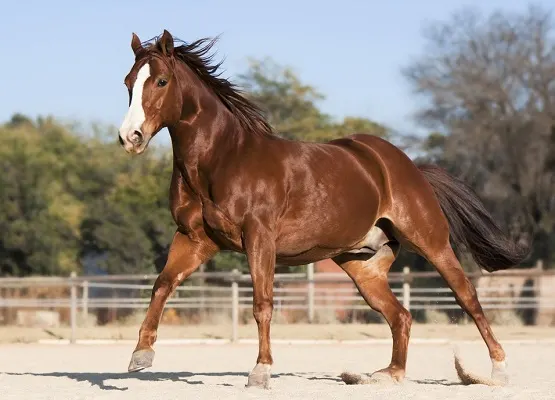
jacotakepics / Shutterstock.com
Out of all horse breeds, the American Quarter horse is by far the most common worldwide. It is also the most popular breed in the United States, with over two million registered horses living in America and over 400,000 in other countries.
The Quarter Horse is the fastest horse breed in the world over a quarter-mile distance. Their heavy musculature and powerful hindquarters enable them to reach speeds of 50 mph (80 km/h) within seconds. The fastest horse in history was a Quarter Horse that ran at 55 mph (88 km/h).
Besides their speed, Quarter Horses are also known for their versatility. Even though they are best at performing on rodeos and Western competitions, they can also excel at show jumping, dressage, trail riding, driving, and virtually any equestrian activity.
Also Read: 6 Interesting Facts About Quarter Horses
Arabian
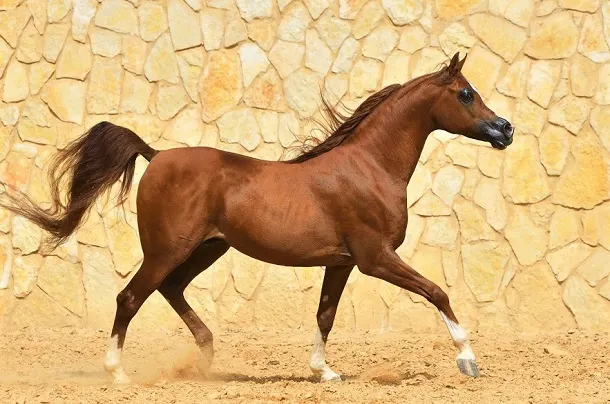
arthorse / Shutterstock.com
One of the oldest purebred horses in the world, Arabians have been around for at least 4,500 years. Their distinctive dished faces, chiseled heads, arched necks, and flagging tails have made them one of the most unique and beautiful horse breeds.
Originating in the Arabian Peninsula, the breed is known for its intelligence, superior stamina, and affection towards humans. They are not only quick learners and talented athletes, but also extremely good-natured and eager to please.
Today, Arabians dominate the endurance discipline and are also one of the most popular and versatile breeds.
There is no task too challenging for these small but fiery horses, who have performed equally well in jumping, eventing, dressage, and driving disciplines.
Also Read: 13 Interesting Facts About Arabian Horses
Thoroughbred
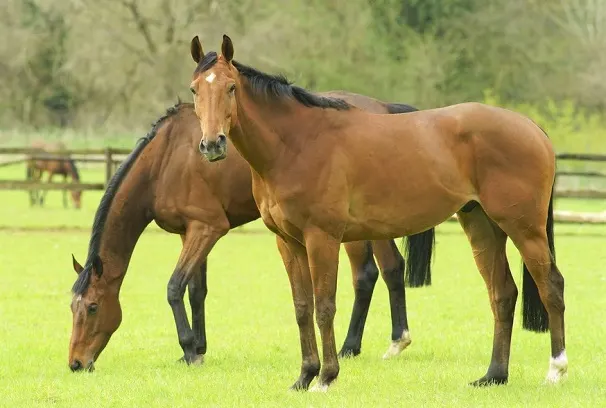
PJ photography / Shuttertsock.com
Thoroughbreds are best known for being elite racehorses thanks to their incredible agility, speed, and stamina.
The number of Thoroughbreds alive today is well into the millions, and around 100,000 foals are bred each year in the hope of creating the next great champion.
The breed was originally developed in England around the 17th and 18th centuries. All Thoroughbreds today can be traced back to one of three foundation sires, namely the Byerley Turk, Godolphin Arabian, and Darley Arabian.
Outside the racing world, Thoroughbreds excel in eventing, jumping, dressage, hunting, and polo. Their tall, lean builds, long legs, and bold attitude make them outstanding athletes in the equestrian world.
Thoroughbreds have also influenced numerous modern horse breeds, such as the Standardbred or Quarter Horse.
Shetland Pony

Alagz / Shutterstock.com
The popularity of Shetland Ponies surpasses that of any other pony breed. They are found in pretty much every corner of the world and are known for being fabulous driving and kids’ ponies.
The Shetland Pony is an ancient breed originally from the Shetland Isles of Scotland. They are typically round in shape with short legs and abundant manes and tails.
Although they are no taller than 107 cm (42 in) at the withers, these little troublemakers are remarkably strong for their size.
Shetland Ponies are enjoyed by children and adults alike and are mainly used for riding, driving, showing, and also therapeutic riding. In the United States, breeders developed a slightly taller and more athletic version of the breed called the American Shetland Pony.
Also Read: 10 Interesting Facts About Shetland Ponies.
Friesian
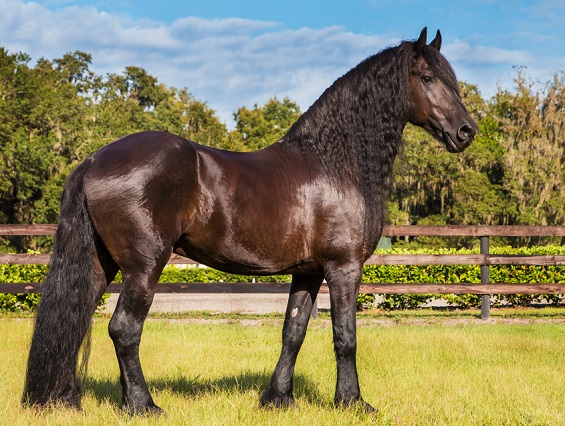
Lindsay Helms / Shutterstock.com
The Friesian breed of the Netherlands is no doubt one of the most beautiful horse breeds in the world. With their jet-black coats and long, wavy manes and tails, these proud and elegant horses turn heads wherever they go.
In terms of type, Friesians are somewhere between a warmblood and a light draft horse. Their draft-like characteristics include strong bone, heavy musculature, and feathering on the legs. At the same time, Friesians are energetic and graceful equines that do well both under saddle and in harness.
In medieval Europe, the ancestors of Friesians were valuable war horses that carried knights into battle. Today, the breed is most popular in the disciplines of dressage and driving.
Friesians also make superb hobby horses and have been used in movies and TV series due to their dashing looks.
American Paint Horse
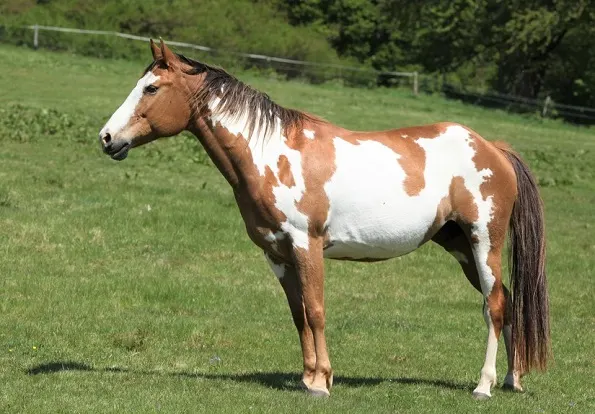
Zuzule / Shutterstock.com
Due to its striking coloration and remarkable athleticism, the Paint Horse has become one of the most popular horse breeds in the United States.
More than just a color breed, the Paint Horse was developed from Thoroughbred and Quarter Horse bloodlines and shows characteristic stock horse conformation.
The four possible color patterns of Paint Horses include tobiano, overo, tovero, and solid horse colors. While the breed is mainly known for its talent in Western disciplines, Paints also make excellent hunter and jumper horses.
Outside of showing, they are one of the best horse breeds for trail riding and first time owners thanks to their easy-going attitude and friendly demeanor.
Clydesdale
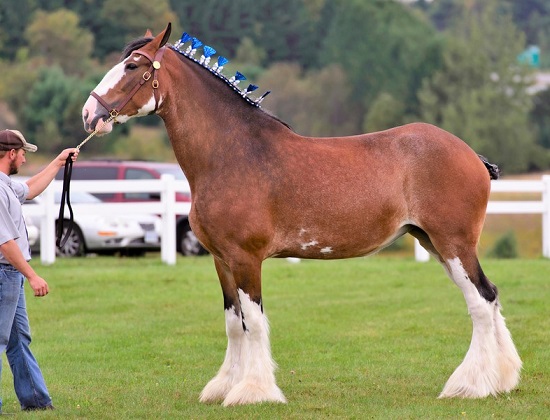
Muskoka Stock Photos / Shutterstock.com
Clydesdales are one of the most well-known draft horses due to their use in Budweiser commercials. The breed originally developed in Scotland around the 18th century and had significant influence from the Shire Horse.
Similar to other draft breeds, the number of Clydesdales fell sharply in the 20th century. In the 1970s, they were a breed vulnerable to extinction, according to the Rare Breeds Survival Trust. Luckily, numbers have stabilized since, and Clydesdales no longer face the threat of extinction today.
Historically, Clydesdales were working draft horses valued for their power. However, their role has shifted over the past two centuries towards a general driving and parade horse.
Clydesdales are typically black or bay in color with heavy feathering on the legs and calm, gentle dispositions.
Also Read: 7 Interesting Facts About Clydesdale Horses
Miniature Horse

Zuzule / Shutterstock.com
Thanks to their adorable pint-size build, Miniature horses have gained admirers all over the globe. These tiny equines were first developed in Europe in the 1600s and were commonly used in coal mines and kept as pets by the nobility.
Despite being the smallest equines in the world, Miniature Horses don’t count as ponies. This is because they are scaled-down versions of regular horses and lack typical pony-like features.
Today, Miniature horses serve as pets, companions, and show horses, competing in driving and in-hand classes.
Most Miniatures stand below 9.2 hands (97 cm) at the withers, with the smallest breed being the Argentinian Falabella. In general, Miniature Horses are gentle, friendly, and easy to train.
Dutch Warmblood

Zuzule / Shutterstock.com
Dutch Warmbloods are popular worldwide due to their ability to perform at the highest level in show jumping and dressage.
The breeding of Dutch Warmbloods began in the 1960s, and since then, the registry produced some of the most iconic horses in the history of equestrian sport.
Also known as KWPN, Dutch Warmbloods have been bred to perform at Grand Prix level from the start. The two greatest dressage icons Moorlands Totilas and Valegro were both Dutch Warmbloods. Similarly, numerous successful international show jumping horses are also members of the breed.
To maintain the quality of the breed, the Dutch Warmblood registry has strict regulations regarding the breeding of horses. For example, mares must be at least 15.2 hands (157 cm) and stallions 15.3 hands (160 cm) tall, with no upper height limit.
Icelandic Horse
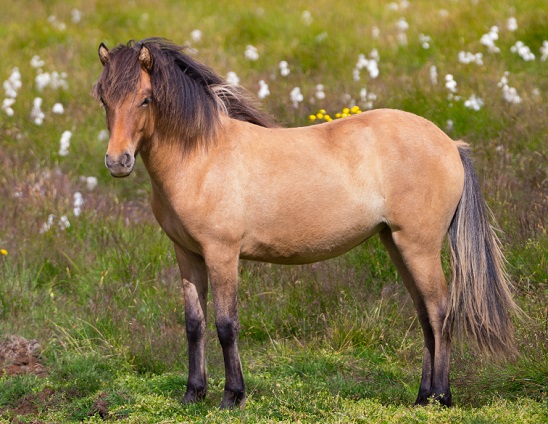
worldclassphoto / Shutterstock.com
Icelandic Horses are one of the most unique and remarkable of all horse breeds. Other than the four basic horse gaits (walk, trot, canter, and gallop), they can also perform two special gaits, the pace, and the tölt.
The Icelandic Horse is an ancient breed that developed on the barren and hostile lands of Iceland. They are now the only horse breed living in the country, as Iceland banned the import of all horses to stop the spread of disease. As a result, Icelandic Horses are exceptionally healthy and live long lives.
Although small, Icelandic Horses are extremely versatile and are able to carry a full-grown adult with ease. Due to their comfortable gaits, the breed is ideal for trail riding purposes.
Icelandic horses are mainly popular in Europe and North America, where they are used for showing and leisure.
Appaloosa
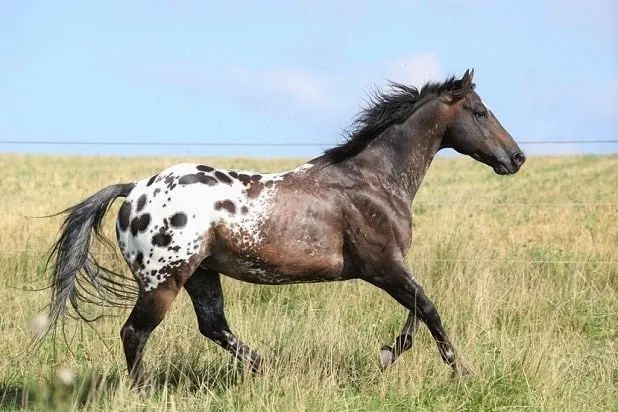
Zuzule / Shutterstock.com
The fabulous spotted coat patterns of the Appaloosa are partly why they are among the most popular horse breeds in the United States. They were originally developed by the Nez Perez tribe for hunting and battle, but are now used for showing, western, and trail riding.
As they cannot be traced back to any particular breed, Appaloosas come in a wide range of shapes and sizes. The breed has a partially open studbook that allows the use of some Quarter Horse, Thoroughbred, and Arabian bloodlines.
The Appaloosa’s main color patterns include the leopard, blanket, snowflake, few spot leopard, and frost variations. They are very versatile horses that have been successful in both Western and English riding competitions.
The Appaloosa has also influenced other horse breeds, such as the Nez Perce Horse and the Pony of the Americas.
American Standardbred
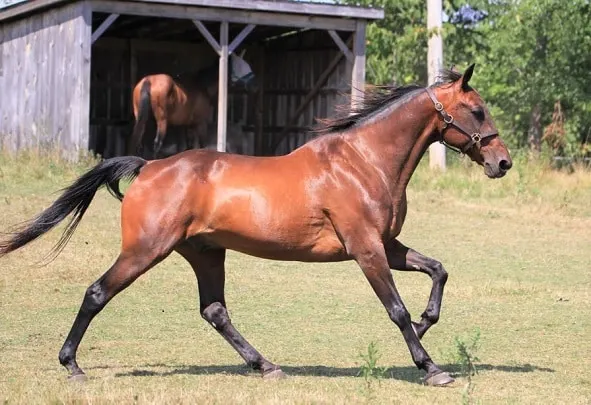
D. Cribbie / Shutterstock.com
Standardbreds are best known for their role in harness racing and will either compete at a trot or a pace. The breed is native to North America and was developed from a mixture of Thoroughbred and harness horse bloodlines.
The fact that the breed has the word “standard” in its name is no coincidence. In the early days, Standardbreds were selected based on their ability to trot a mile in under 2 minutes 30 seconds.
Today, most Standardbreds can outperform this old time limit, and many complete a mile in just 1 minute 50 seconds.
The typical build of a Standardbred is similar to a Thoroughbred, although they are more heavily muscled and have a longer body.
Overall, Standardbreds are calm and friendly horses with great potential in various equestrian disciplines.
source: horseyhooves.com








